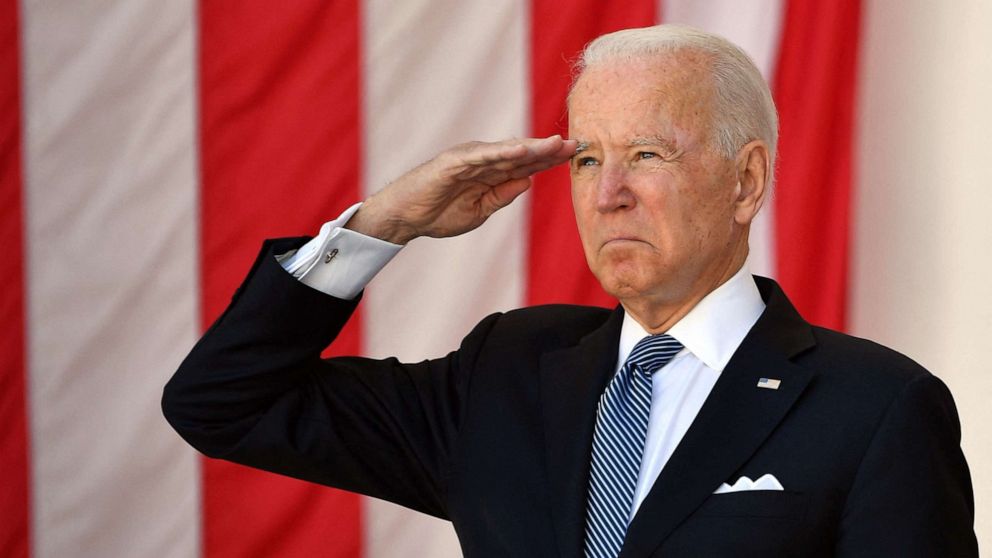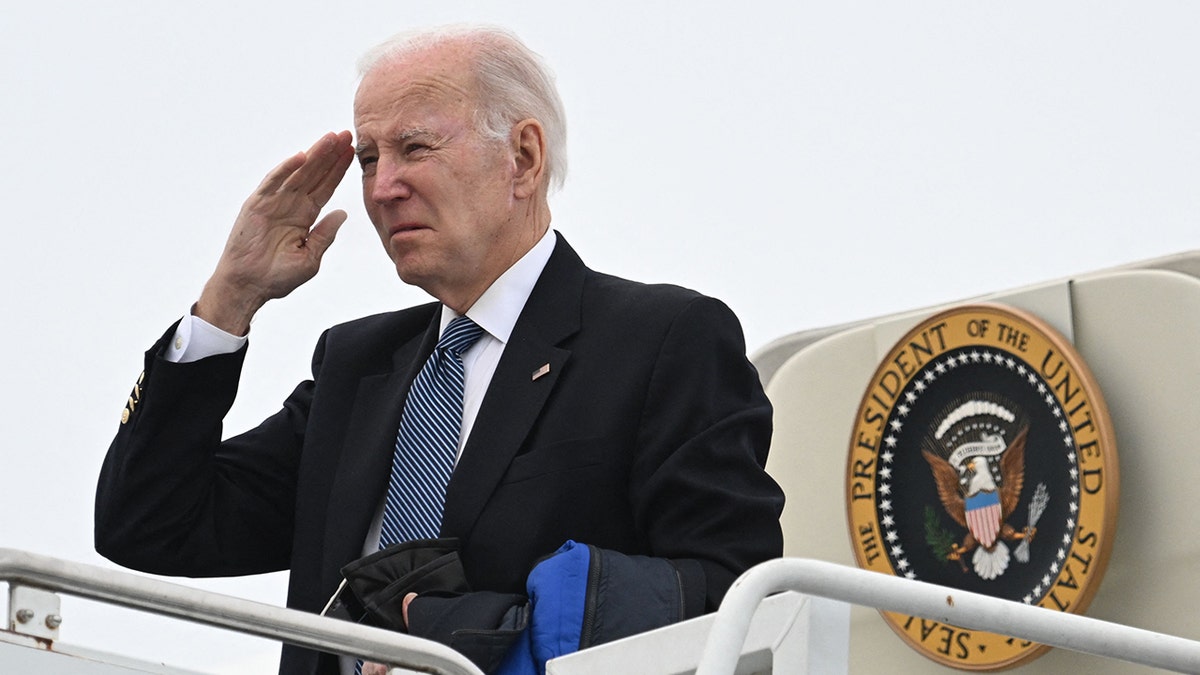Can a presidential gesture, as seemingly simple as a salute, truly become a focal point of national discourse? The answer, considering the recent flurry of online commentary surrounding presidential salutes, flag displays, and symbolic actions, appears to be a resounding yes.
The United States, a nation steeped in symbolism, often finds itself debating the meanings and implications of its leaders' actions. This is particularly true when those actions touch upon the flag, military protocol, and expressions of national identity. Recent events involving President Joe Biden have, unsurprisingly, reignited these conversations, illustrating the complexities of navigating these sensitive terrains.
A White House pride celebration, held under the current administration, provided one such flashpoint. The event, which included a display of the American flag, the Progress Pride flag, and a perceived adherence (or lack thereof) to flag etiquette, quickly became the subject of online criticism. Social media platforms buzzed with commentary, dissecting the visual presentation and questioning the appropriateness of certain gestures. While the intent of the celebration was likely to express inclusivity and support for the LGBTQ+ community, the details of the display became a lightning rod for debate.
- Unveiling The Life And Legacy Of Jason Emanuel Gould
- Shiloh Joliepitt A Glimpse Into The Life Of A Rising Star
Furthermore, reports of the President's actions, or lack thereof, during patriotic observances are regularly scrutinized. The debate over whether a president salutes the flag during the national anthem has been ongoing for years, and many believe that only military members or veterans are permitted to do so, although this is not strictly true. The U.S. Flag Code, specifically Section 301, offers guidance, stating that individuals in uniform should render a military salute at the anthem's first note. The lack of a specific, universally accepted protocol for civilian leaders contributes to the ongoing discussions surrounding this act.
Consider the complex nature of the presidential role, one where military roles are often symbolically embraced. Presidents, who are ultimately civilian leaders, serve as the commander-in-chief of the armed forces. Therefore, it is common to witness them saluting the sentries upon boarding or disembarking Marine One, the presidential helicopter. These actions underscore the intricate interplay between civilian leadership and military symbolism, a balance that is constantly assessed by the public.
The evolution of the digital age has also profoundly affected how presidential actions are perceived and shared. The instantaneous nature of social media has amplified the impact of gestures. A seemingly innocuous moment can swiftly become a viral sensation, generating widespread discussion and analysis. In January 2025, a rumor circulating online claimed President Biden had switched the stars and stripes flag at the U.S. Marine Corps War Memorial in Arlington, Virginia with a pride flag, which was later proven to be false.
The visual impact of the flag display at the White House pride event, for instance, quickly permeated various platforms. A Facebook post dated June 12 showed the display. The photograph was circulated rapidly, generating reactions that ranged from supportive to critical, reflecting the complex views surrounding the flag and its role in public discourse. This phenomenon illustrates the power of visual communication in shaping opinions and framing conversations.
In the context of the presidency, even the smallest gestures are magnified. President Biden's actions, such as his embrace of a military salute or his decision on how to display the flag, are subject to intense scrutiny and are perceived by various segments of the population. These actions, amplified by social media and the 24-hour news cycle, become symbolic representations of broader values, beliefs, and affiliations.
The evolution of such debates reflects a broader cultural climate. As society grapples with shifting values, evolving social norms, and the increasing significance of identity politics, the symbolic acts of public figures are becoming more important. The flag, in this instance, serves as a potent symbol of national identity, unity, and patriotism. How it is displayed and how leaders interact with it, takes on added weight in the context of a society trying to accommodate a multitude of views.
The discussions do not begin and end with President Biden. For example, former President Donald Trump's gestures during the national anthem also drew considerable attention. Trumps salutes were a regular feature of public events, and his actions sparked commentary from media outlets and commentators. These discussions highlighted the complexities of presidential behavior and the symbolic weight attached to such actions.
The debate over military salutes and flag protocol extends beyond the specific actions of any single leader. The questions raised by these instances are deeply ingrained in the American fabric. What constitutes proper respect for the flag? When is it acceptable to salute? The responses to these questions provide insights into the ways Americans perceive their nation's traditions, values, and leadership.
The recent controversies surrounding the flag, salutes, and other symbolic gestures performed by President Joe Biden are indicative of a continuing dialogue about values, identity, and leadership. The flag serves as a potent symbol of the United States, and any interactions with it are bound to be scrutinized. As these controversies evolve, they are certain to reflect the shifting political landscape and social consciousness, serving as a reflection of the nation's values.
The examination of these moments is not just about the specifics; it is about the ongoing effort to define and redefine the meaning of American identity. As the nation evolves, so too will the interpretation of these symbolic gestures and the leaders who perform them. The conversations around these actions, from the display of the flag to the rendering of a salute, highlight a nation in constant dialogue with itself, striving to reconcile its values and symbols in a time of rapid change.
Here is a summary of incidents, with additional details to add depth to the discussion:
| Incident | Details | Significance | Context |
|---|---|---|---|
| Pride Celebration at the White House | Included the display of the U.S. flag, and the Progress Pride flag. | Generated online criticism regarding flag protocol and the perceived politicization of symbols. | The event took place during Pride Month, illustrating the administration's support for the LGBTQ+ community. |
| Salutes and Military Protocol | President Biden's actions, including salutes, were subject to scrutiny. | This scrutiny highlighted the complexities surrounding presidential conduct and military etiquette, even among civilians. | The debate about salutes underscores the ongoing debate about the role of the president as the commander-in-chief and their relationship with the military. |
| Rumors and Social Media Discourse | False claims about President Biden's actions regarding the U.S. flag went viral on social media. | Demonstrates the speed with which misinformation can spread, and the power of social media in shaping public perception. | Rumors and social media content about the President are a constant aspect of the political landscape, reflecting the significance of perception in modern political discourse. |
| Comparison to other past Presidents | Former President Donald Trump's salute during the national anthem also drew attention. | This comparison emphasizes that the scrutiny of presidential gestures is not new and that actions are often interpreted in light of the political context. | Trump's actions, like Biden's, became symbolic in a deeply polarized political climate, reflecting diverging views of patriotism and leadership. |
| Flag Code and Protocol | Discussions regarding the U.S. Flag Code, particularly Section 301, about saluting during the national anthem. | These discussions reveal the importance of understanding flag protocol and its perceived importance in defining the national identity. | The U.S. Flag Code is not strictly enforced, but it serves as a framework for understanding the symbol. The President, like other public figures, is expected to comply with these guidelines. |
For more information about the U.S. Flag Code, see the official document on the U.S. Government Publishing Office website: https://www.law.cornell.edu/uscode/text/4/301
- Did Ree Drummond Pass Away In 2024 A Comprehensive Look
- Shiloh Joliepitt A Glimpse Into The Life Of A Rising Star


